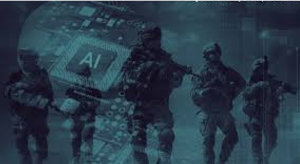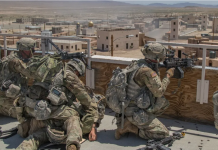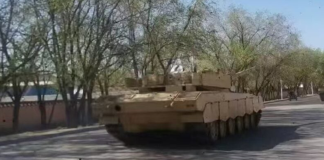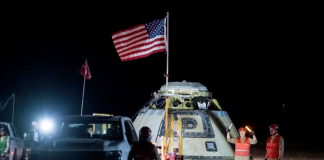By Fabio A. AVERSA
Western Europe has enjoyed relatively peaceful prosperity for the past eighty years: this has largely been due to the protection afforded by the NATO Alliance as well as the Eastern European buffer with Russia. The balance achieved with the Yalta Accords of 1945, followed by the collapse of the USSR in 1991, created an unassailable illusion of perpetual peace. However, Russia’s invasion of Ukraine has unquestionably shaken this belief. This new challenge to European peace and security, combined with Chinese global influence and military intimidation, points to a new era of geostrategic competition and instability.
Indeed, the world has once again become a precarious powder keg. Today, conflicts, from localized clashes to full-scale wars, involve nearly 50 nations. Beyond these overt conflicts are more faint but equally destabilizing tensions that exacerbate global insecurity, particularly political and economic instability across Africa, Central and South America.

Instability can erupt suddenly and unpredictably, underlining the fragile nature of global security. In this context, we can no longer take for granted that a robust national and allied defense capability emerges as a critical priority.
The Transformative Role of New Technologies
The geopolitical landscape is evolving at a rapid pace. Governments are hard pressed to keep up with technological change and are slow to implement policies that harness the benefits and mitigate the risks of these disruptive changes. Technology empowers individuals and nonstate actors to challenge the role of the state in new ways. Long-standing power structures are being challenged. Alliances are adapting too slowly, and the interplay of economic and demographic factors is reshaping global relations. Challenges such as uncontrolled migration, the escalating effects of climate change, and increased demand for scarce natural resources add layers of complexity to an already intricate web of economic and security issues.

Amid this environment, technological advancements are profoundly transforming warfare. Beyond conventional battlefields, new domains such as space and cyberspace have expanded the scope of conflict. Underwater operations and information operations are redefining the rules of engagement in modern warfare. These innovations represent a paradigm shift, necessitating that nations remain vigilant and adaptive.
Navigating the Complexity of Modern Conflict
The multifaceted nature of contemporary conflict defies traditional classification, making prediction, prevention, and crisis management increasingly challenging. Today’s conflicts are marked by their transversality and unpredictability. Moreover, the risk of conflict due to ‘miscalculation’ or ‘escalation of an incident’ is greater today than at any other time. The war in Ukraine exemplifies all this complexity, blending time-tested strategies with cutting-edge technologies. Traditional military tactics intersect with unconventional methods like disinformation campaigns, cyberattacks, and the emergence of drone warfare, sewing fear and uncertainty among civilian populations.

Technologies such as artificial intelligence and automation are reshaping battlefields, while social media-based propaganda wield significant influence over public opinion and political decision-making. Quantum technologies, particularly in cryptography and secure communication, are breaking new ground. Organizations like NATO are preparing to counter emerging threats, including “algorithmic cognitive warfare,” which aims to manipulate strategic competitors’ perceptions and behaviors.
Defense as a Strategic and Social Imperative
The growing complexity of modern conflicts demands a fundamental rethinking of defense’s role. It is no longer just a strategic endeavor but a critical pillar of day-to-day national security and prosperity.

Armed Forces around the world are intensifying their efforts to engage with the public, using strategic communication, educational seminars, and awareness campaigns to inform citizens about current risks and the importance of robust defense measures.
In addition to military outreach, think tanks and research institutions are forging alliances with industry and academia to develop innovative solutions. These collaborative efforts are vital in addressing the multifaceted threats of today while preparing for the uncertainties of tomorrow.
Cultivating a Collective Defense Mindset
Defense can no longer be viewed solely as a military responsibility; it must become a whole of Government commitment.

A cyberattack on critical infrastructure, for instance, could cripple an entire nation. Images of cities like Gaza and Kyiv serve as stark reminders of the consequences of civil crisis response unpreparedness.
Despite heightened media attention on international crises, public engagement often lags. This underscores the need to foster a culture of defense that is inclusive, interdisciplinary, and deeply rooted in societal awareness.
By involving citizens, institutions, and economic sectors, nations can build a united front against emerging threats.
Looking Ahead: Acting with Purpose
Addressing global security challenges requires immediate and decisive action. Cultivating a defense-oriented mindset hinges on transparency, public trust, and effective communication between governments and citizens. Public awareness campaigns must highlight the significance of defense, drawing attention to the values, traditions, and innovations that underpin national security.
Integrating all the Armed Forces with civil society and political leadership is essential for confronting today’s challenges and safeguarding the future. Investing in defense is not merely about military preparedness, it is about protecting the values, lifestyles, and cultural identity that define a nation. The security measures that we implement today lay the foundation for the freedoms we aspire to preserve tomorrow.













